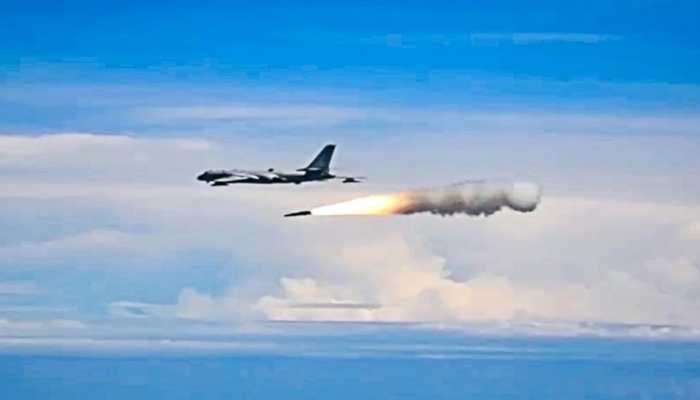China Triggers Alarm With 1,000 KM Range Air-To-Air Hypersonic Missile; Who Should Be Worried?
The missile reaches speeds beyond Mach 5. It is designed to intercept high-value aerial targets, including stealth fighters and surveillance aircraft.
Trending Photos
) Photo: South China Morning Post
Photo: South China Morning PostBeijing: China has reportedly tested an air-to-air missile capable of striking aerial targets at a distance of up to 1,000 kilometres. It has sent ripples across the global defense community. If accurate, the test could signal a fundamental shift in modern air combat strategy. It will potentially allow fighter jets to neutralise enemy aircraft long before they even come into radar range.
The development was first reported by South China Morning Post, citing Chinese military sources. According to the report, the missile reaches speeds beyond Mach 5. It has placed it in the hypersonic category. It is designed to intercept high-value aerial targets, including stealth fighters and surveillance aircraft.
Chinese engineers are said to be working on this new system with the aim of providing long-range superiority across contested airspaces. Still unnamed publicly, the project may allow China to target aircraft such as the U.S. F-22 Raptor, F-35 stealth fighters and the B-21 Raider well before they enter engagement range.
Missiles of this class are typically referred to as Beyond Visual Range (BVR) air-to-air missiles. They form a critical part of next-generation aerial warfare. Until now, the longest-range BVR missiles in service globally include Russia’s R-37M and the U.S. AIM-174B. Both are capable of reaching distances around 350-400 kilometres.
Presently under development, India’s Astra Mk-3 is expected to match that range once deployed.
However, a 1,000-kilometre air-to-air missile would outclass all existing systems.
Experts say that if China’s claims are validated, the development could force countries like India, Japan, Taiwan and even the United States to re-evaluate their air combat doctrines. No matter how stealthy, no fighter jet could escape a missile launched from that distance. The implications are serious, assuming tracking and targeting systems remain precise.
Historically, air-to-air missiles have evolved from short-range weapons introduced in the 1950s, such as the U.S. AIM-9 Sidewinder and the Soviet K-series, to the BVR missiles of today. The modern battlefield increasingly depends on aerial platforms like AWACS and AEW&CS for surveillance and coordination. A missile capable of striking these assets from such vast ranges could potentially change the outcome of future conflicts before they even escalate.
India, which currently fields the Astra Mk-1 and is working on Astra Mk-2 and Mk-3, faces a widening gap in this segment. While the Defence Research and Development Organisation (DRDO) has made consistent progress, there are calls within India’s strategic community to accelerate indigenous hypersonic missile development.
In addition, India may need to invest more heavily in advanced radar systems and tracking sensors, potentially through ISRO-DRDO collaboration, to detect and respond to threats launched from long distances at high speeds.
As per the latest assessments, India’s current missile capabilities are limited to around 400 kilometres in range. While the Chinese claim has not yet been independently verified, military analysts suggest it would be prudent for India to consider the scenario as credible and prepare accordingly.
The development comes at a time when tensions remain high in East Asia, particularly around Taiwan and the South China Sea. If China’s new missile enters operational service, it could give the country significant leverage across the region, including air dominance over key hotspots.
Though the precise operational status of the missile remains unclear, the signal from Beijing is loud enough. Nations dependent on legacy BVR systems now face pressure to catch up, both in terms of range and speed, before the skies become inaccessible.
Stay informed on all the latest news, real-time breaking news updates, and follow all the important headlines in india news andworld News on Zee News.
Live Tv



)
)
)
)

)
)
)
)
)
)
)
)
)
)
